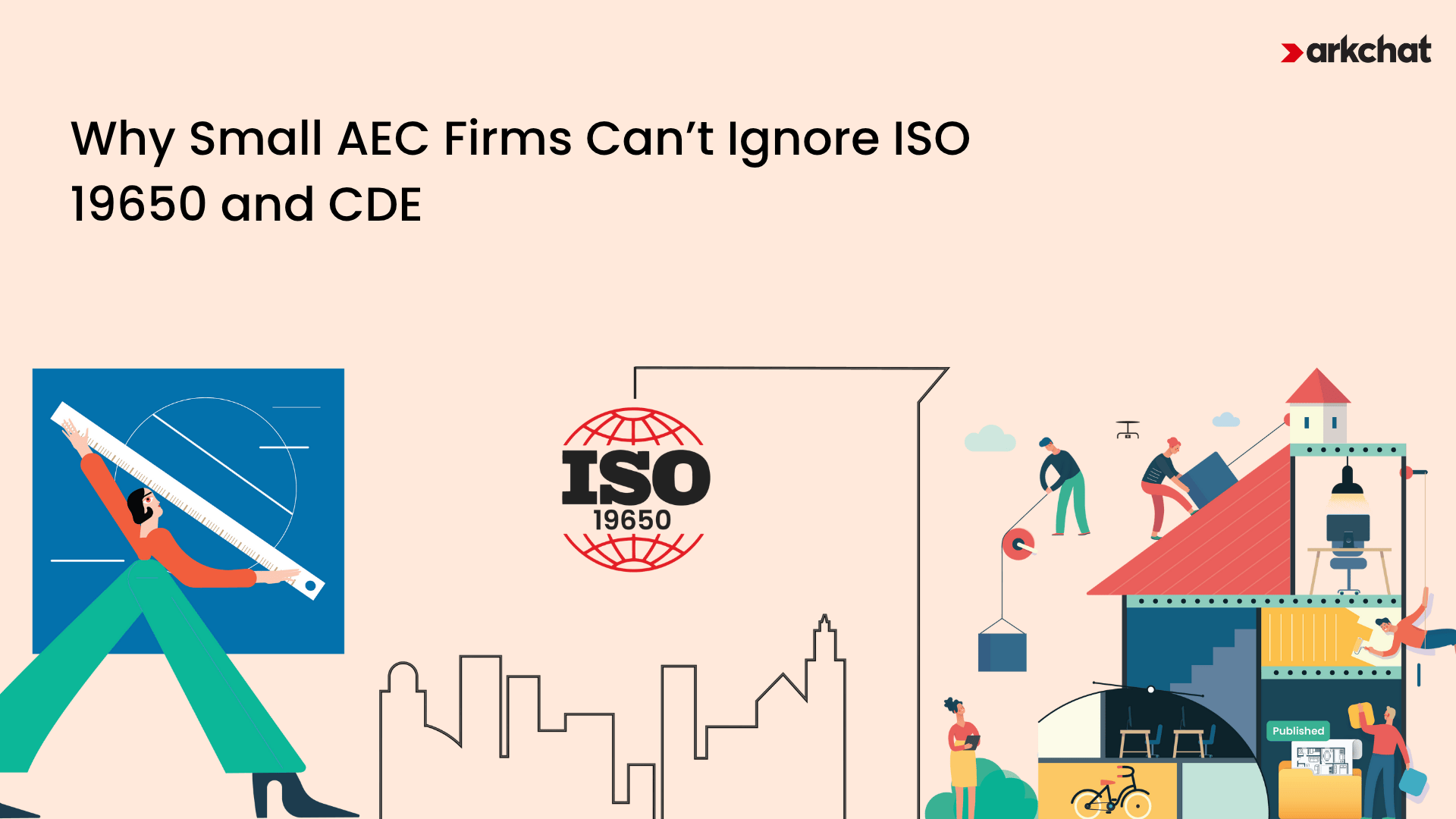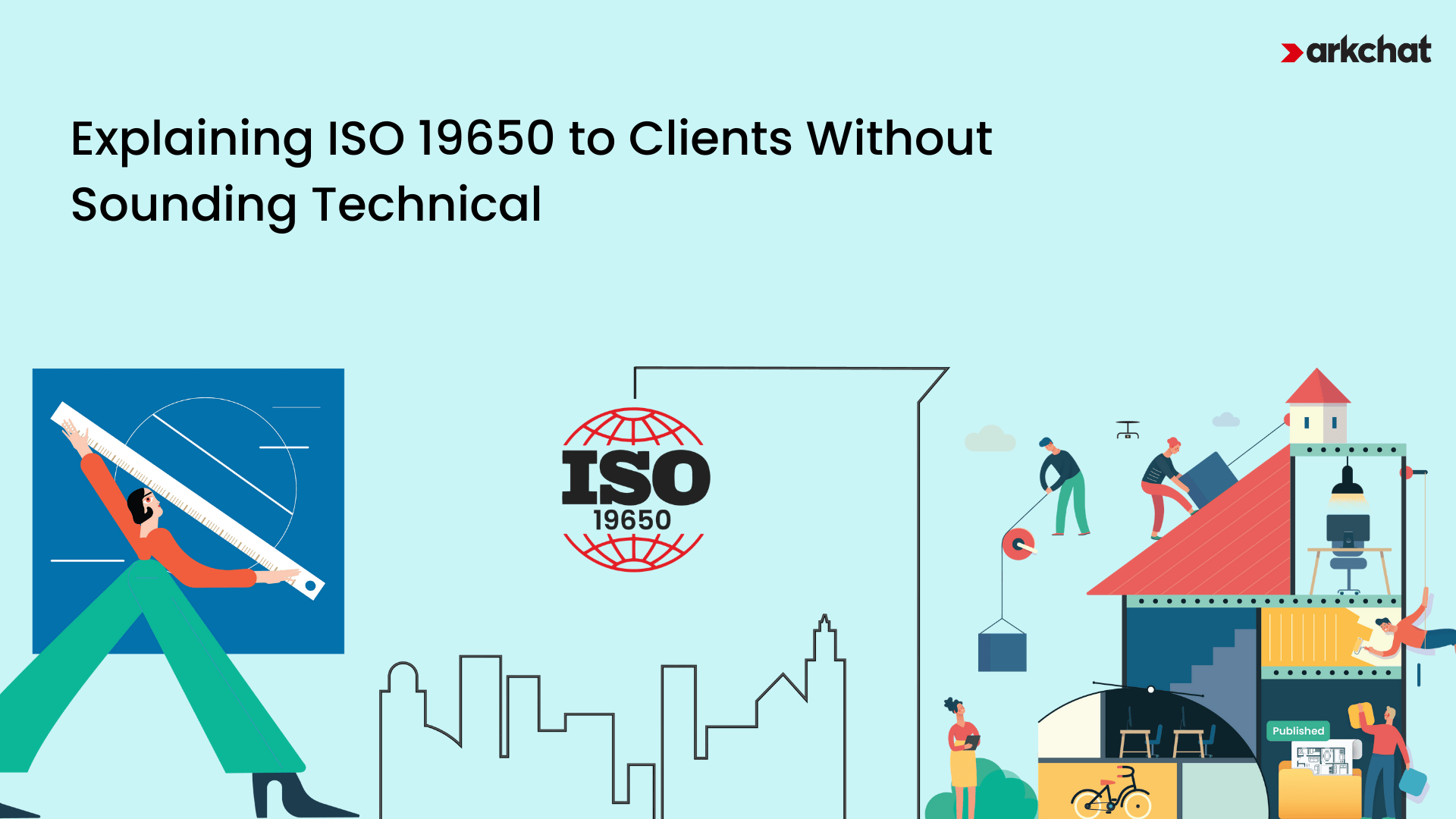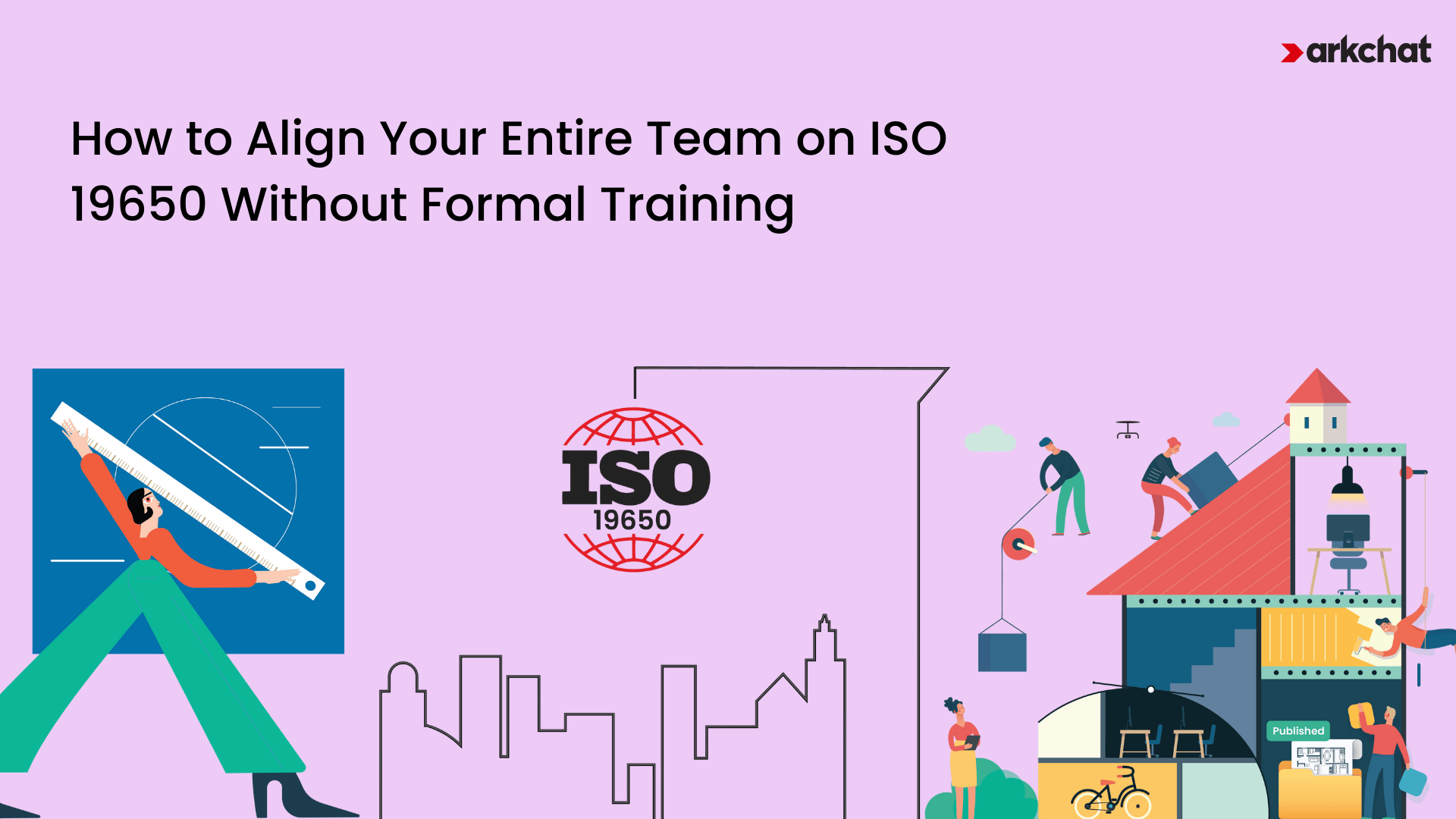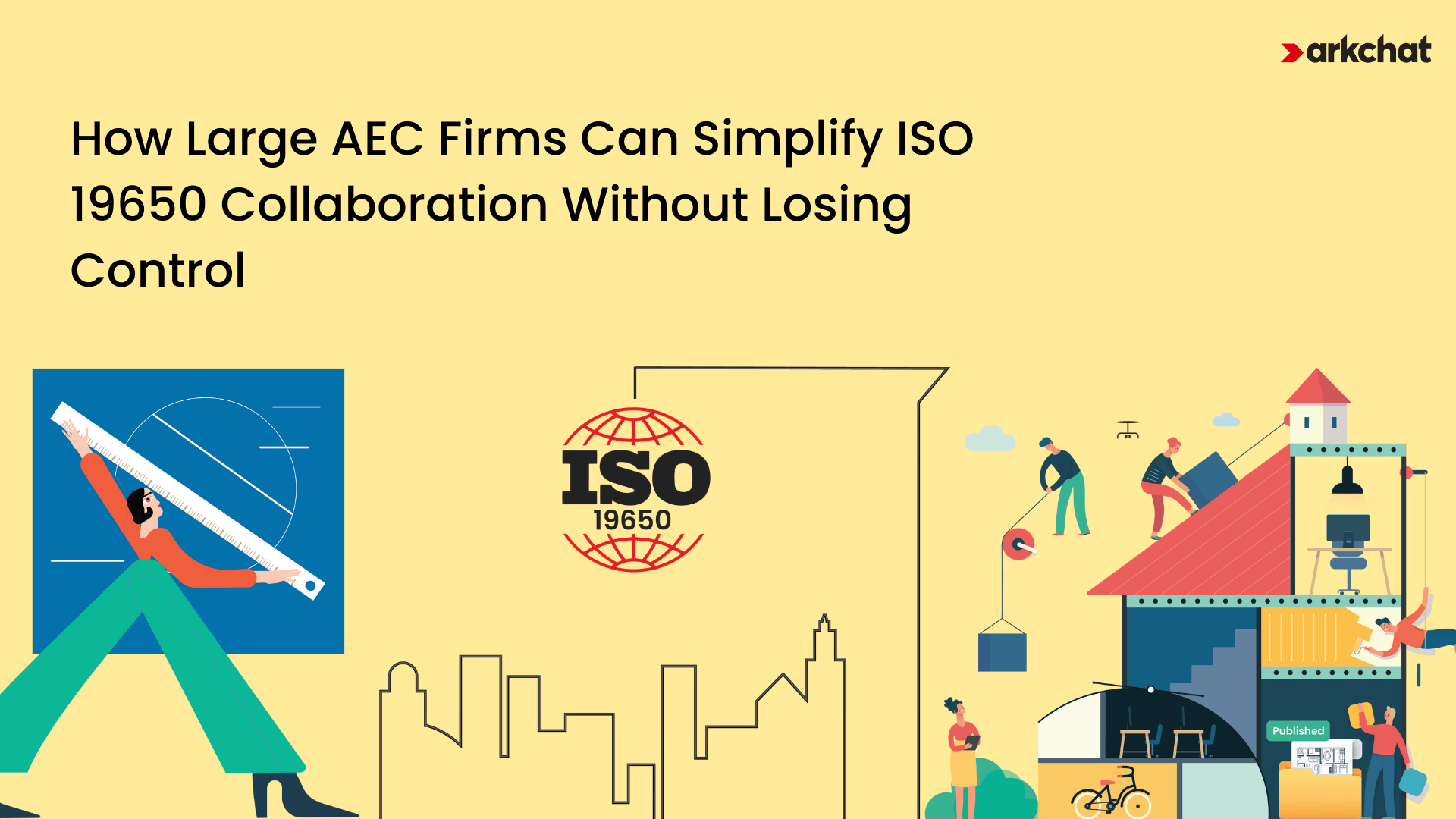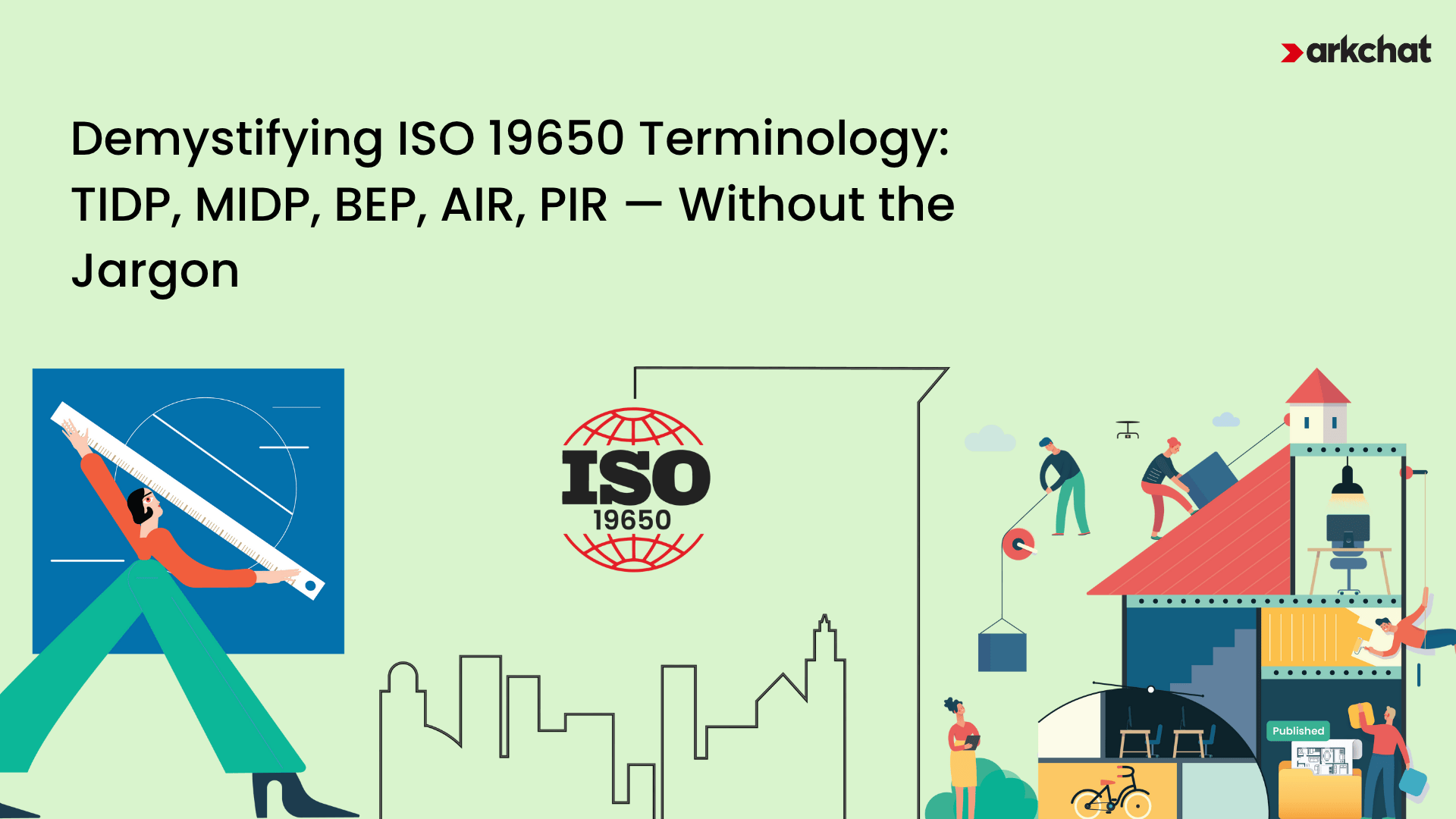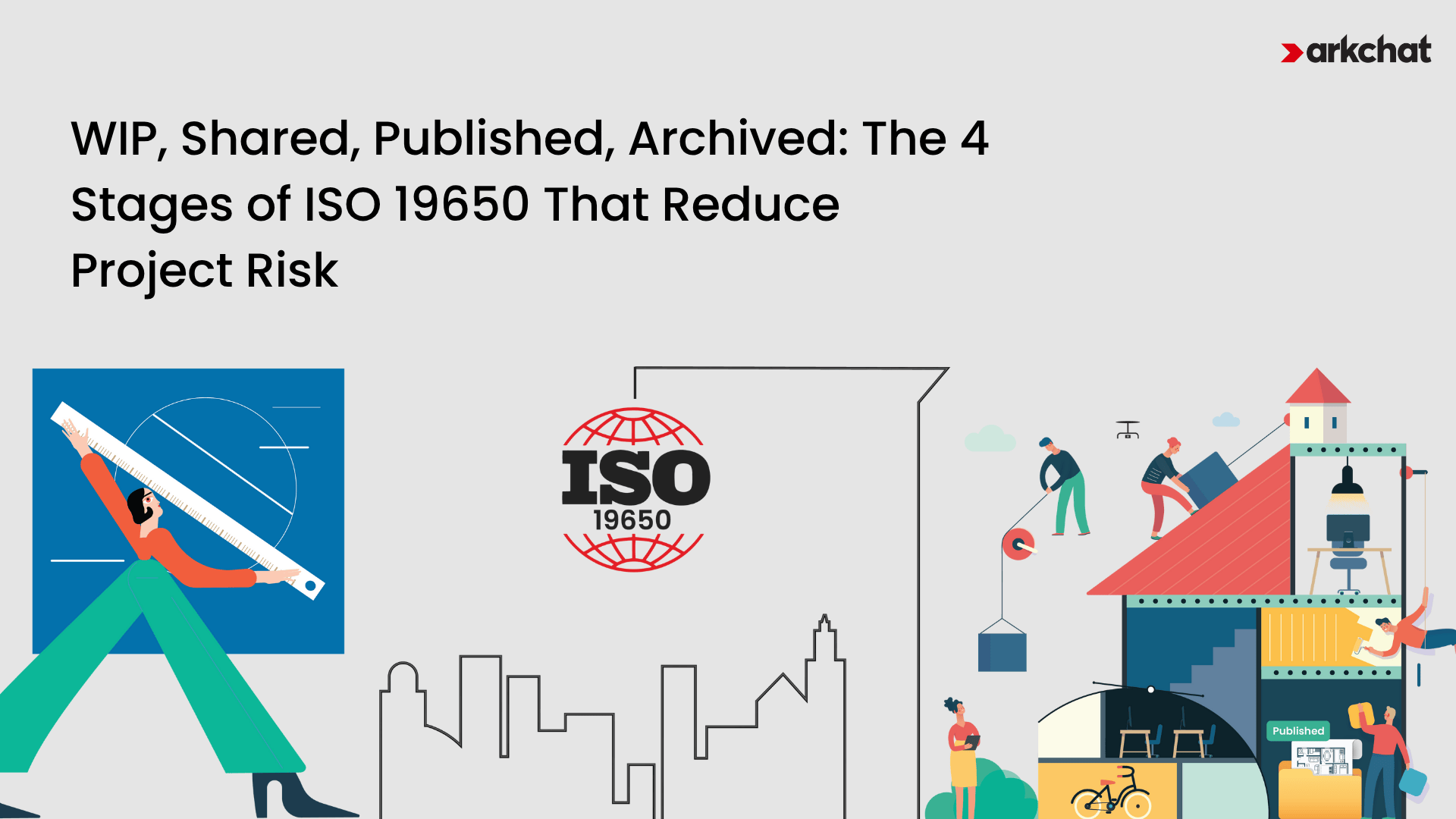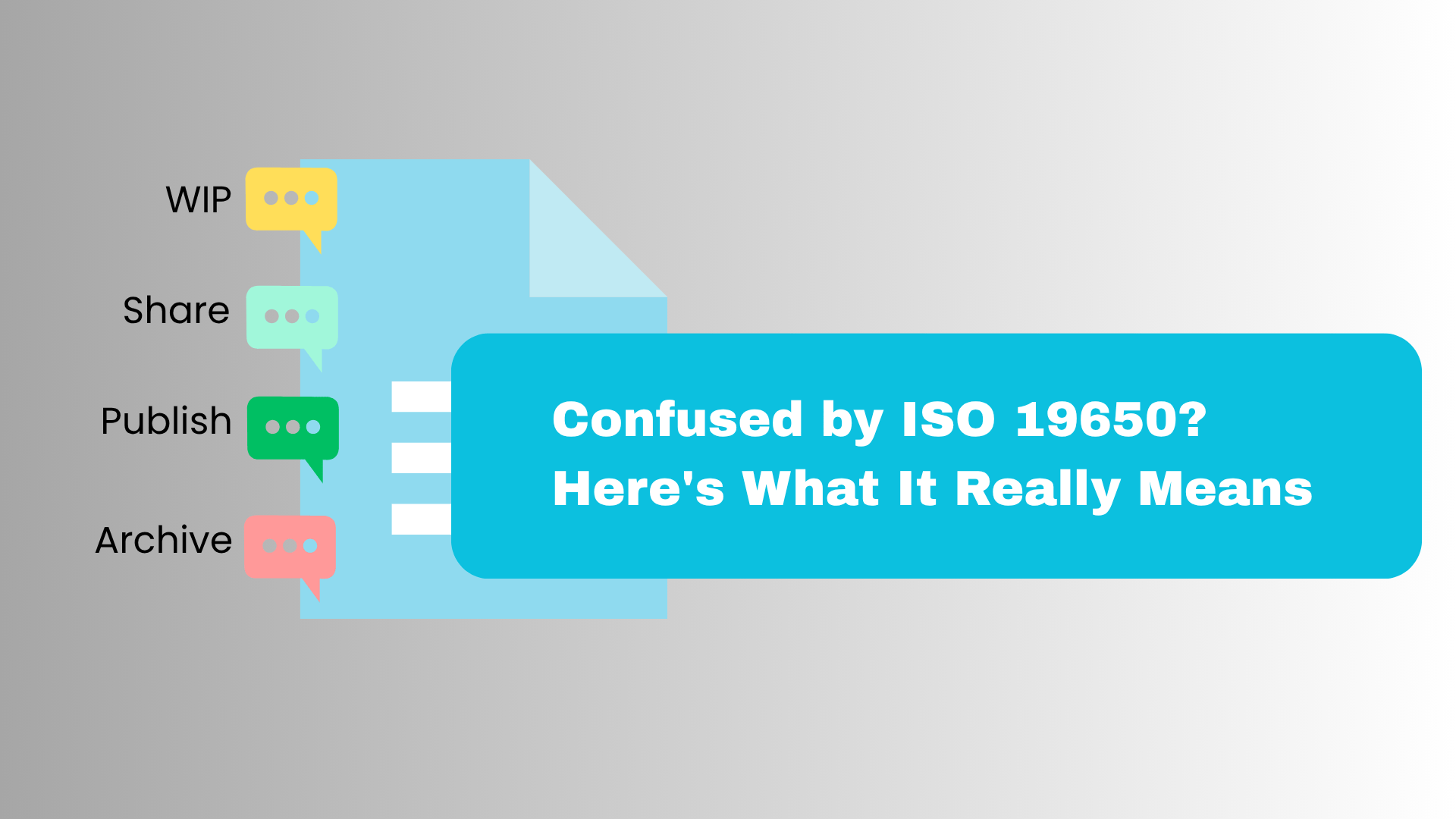Part 6 of the series: “Mastering Project Information Management — The ISO 19650 Way”
Introduction: The Small Firm Reality
When it comes to ISO 19650 for small firms, the perception is often the same: “That’s for large firms with BIM managers and big budgets.” But in my experience, it’s actually small AEC firms that have the most to gain from it.
In smaller teams, every decision, every delay, and every misfiled drawing has a direct financial impact. There is no buffer for rework, and every hour counts. ISO 19650 for small firms was created to tackle precisely this chaos, and when paired with a simple Common Data Environment (CDE), it can turn even the smallest firm into a highly efficient, professional operation.
In this article, I’ll explain why ISO 19650 for small firms is less about compliance and more about creating a practical foundation for sustainable growth.
The Hidden Cost of “Business as Usual”
If you’ve ever lost hours trying to find a “final” drawing or chased email approvals for weeks, you already know the cost of poor information management.
Here’s what typically happens in small firms:
- Files are scattered across personal drives, emails, or messaging apps.
- Version confusion leads to rework when outdated drawings are used.
- Approvals are informal, buried in email chains with no audit trail.
- Collaboration stalls because consultants and clients don’t have a shared space.
For small firms, these aren’t minor inconveniences—they are project risks. One mistake on a $500k fit-out project could wipe out an entire month of profits.
This is why ISO 19650 for small firms isn’t optional—it’s risk management.
What ISO 19650 Actually Does for Small Firms
At its core, ISO 19650 for small firms is about ensuring the right information reaches the right people at the right time. It introduces a structured way to manage project data from start to finish.
For small firms, it delivers:
1. Clarity in Information Management
- Standardized file naming ensures nobody uses the wrong version.
- A single source of truth eliminates duplicated files across different platforms.
Example: Instead of “Layout-Final-Revised-2-June-Updated,” ISO 19650 uses structured naming like “A-101-WIP-2025-07-Layout,” which tells you exactly what it is and its status.
2. Workflow Discipline Without Extra Admin
Even small firms can benefit from clear stages:
- Work in Progress (WIP): Internal drafts, safe from external review.
- Shared: Files reviewed by collaborators but not yet approved.
- Published: Approved documents ready for construction or submission.
This lifecycle, central to ISO 19650 for small firms, eliminates confusion and reduces costly errors.
3. Easier Collaboration with Bigger Players
Larger firms often demand ISO 19650-aligned workflows. By adopting even the basics, small firms can align quickly and collaborate with minimal friction.
The Role of a Common Data Environment (CDE)
You can’t apply ISO 19650 for small firms effectively without a proper CDE—it’s the digital workspace where your project information lives.
For small firms, a CDE isn’t just software—it’s a shield against project risk.
| Without a CDE | With a CDE |
| Files scattered across email, drives, and WhatsApp | One centralized, organized source of truth |
| No version control | Clear WIP, Shared, Published, and Archived stages |
| Approvals lost in inboxes | Approvals tied to files with clear audit trails |
| Difficult collaboration with clients and consultants | Simple, structured access for all stakeholders |
By integrating ISO 19650 for small firms into a simple CDE, smaller teams immediately gain structure and professionalism.
Arkchat Approach to CDE for Small Firms
Most CDE platforms today are built for large enterprises with complex templates like TIDPs, MIDPs, AIRs, and PIRs. But ISO 19650 for small firms doesn’t have to be this complicated.
Arkchat is building a simplified CDE designed for small teams:
- Version control built-in: Files are tracked across WIP, Shared, and Published stages.
- Integrated with messaging: Files live inside chat threads, so you can discuss, assign tasks, or seek approvals without switching apps.
- Auditable file conversations: Each file has its own thread, making approvals transparent.
- No heavy templates: We’re not adding TIDP, MIDP, AIR, or PIR—our focus is everyday simplicity, not admin overhead.
Arkchat helps make ISO 19650 for small firms a practical reality.
Why ISO 19650 for Small Firms Creates a Competitive Edge
Small firms often assume standards are about bureaucracy, but in truth, adopting ISO 19650 for small firms early creates a market advantage:
- Professional Reputation: Clients see structured documentation and trust you more.
- Collaboration Readiness: Larger firms are increasingly mandating ISO 19650. Be ready to say “yes” without hesitation.
- Reduced Rework: Clear workflows cut down on mistakes, saving hours every week.
- Scalable Growth: A simple CDE means you can handle more projects without chaos.
Practical First Steps for Small Firms
Getting started with ISO 19650 for small firms is simpler than it looks:
- Adopt a CDE: Even a lightweight solution is better than scattered files.
- Train your team in naming conventions: This alone prevents countless errors.
- Track file stages (WIP, Shared, Published): A basic workflow can prevent big problems.
- Tie approvals to files: Eliminate informal email-based sign-offs.
These small steps make ISO 19650 not just manageable but profitable for small firms.
Final Thoughts
For small AEC businesses, ISO 19650 for small firms isn’t about copying big players—it’s about building discipline, avoiding risk, and gaining the trust of bigger clients.
With a simple CDE and tools like Arkchat, ISO 19650 becomes less of a “standard” and more of a competitive advantage. Start small, stay consistent, and watch how these practices transform the way your firm operates.
